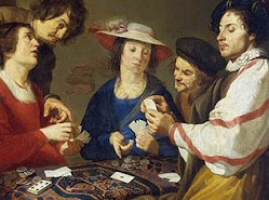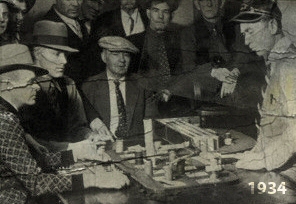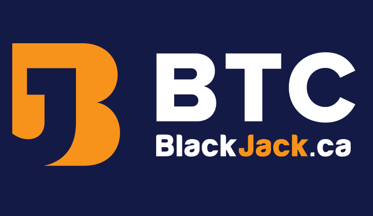The Origins and Progression of Blackjack History Through the Ages

Blackjack is one of the oldest, most beloved gambling amusements in the world. It is the second most popular casino game in the Western Hemisphere, beaten only by slot machines. As any seasoned gambler will tell you there’s a distinct difference between slots and blackjack players; that being the preferential capacity for thoughtful application.
Slot play encompasses a mind-numbing monotony of visual effects. It takes genuine mental fortitude to play and win at blackjack. This is not to say that one is any better than the other, but rather that blackjack players undertake a more interactive role in their gaming experience, and subsequently, a greater level of control over the outcome.
Perhaps this same degree of interest will help explain the typical blackjack player’s curiosity in understanding the history of the game. Sad to say, the exact origins of blackjack are not known, but rather speculated. This is where our story begins…
The Mysterious Origins of Blackjack
There are a number of theories as to how and where blackjack roots were first planted. We know for certain that its name evolved throughout time. It was most certainly not “blackjack” before reaching the seedy old saloons of Las Vegas, Nevada.
Let’s take a look at three reasonable, chronological theories historians have come up with over the centuries.
#1 Trente-Un (One and Thirty), ~1440 Spain
Our first theory states that blackjack derived from a Spanish card game called Trent-Un, which translates into English as “One and Thirty” (or Thirty One). We can date this game back as far as 1440. That’s when it was first documented in a sermon of Bernadine, a famous French monk of that era. Over the next two centuries, mention of Trent-Un is noted in a series of additional publications.
According to these texts, the fundamental rules of Trent-Un are remarkably similar to that of blackjack. The key differences are implied in the game’s title. A hand originates with three cards. The goal is to achieve a total closer to 31 than the dealer’s, without going over. Also like blackjack, players receive a reward for being dealt a natural 3-card hand of 31.
#2 Veintiuna (Twenty One), ~1600 Spain
Another popular theory – widely considered the most believable of the three – is that blackjack originated as the Spanish card game Veintiuna, which translates to “Twenty One“. The first mention of Veintiuna was documented in the book Rinconete y Cortadillo, by Spanish author Miguel de Cervantes. He wrote the book between 1601-02, about ten years before he went on to publish his most famous novel, Don Quixote.
This tale described a group of main characters who cheated their way to ill-gotten monetary gain throughout the casinos of Seville. They were especially adept at cheating in the game of Veintiuna. In describing the game, the author states the objective is to reach, but not exceed, 21. He defines the value of an Ace as 1 or 11.
#3 Vingt-et-Un (Twenty One), ~16-1700 France
Around the same time Veintiuna was picking up literary speed in Spain, a similar game by the name of Vingt-et-Un was gaining notoriety in France. Vingt-et-Un also translates in English to “Twenty One“. This French variant is believed to have been derived from popular French card games Chemin de Fer (Eng. “Railway“, which later evolved into baccarat) and French Ferme (“French Farm“).
It’s hard to pin down a date for when Vingt-et-Un first appeared in France. Historians have narrowed it down to somewhere between 1600-1700. Once again, we see very similar rules. However, Vingt-et-Un did not involve a house-dealt hand. The deal rotated among players, who took turns acting as banker. Otherwise, the rules were almost exactly that of blackjack today. Each player received two cards. The goal was to beat the dealer by achieving a closer hand to 21 than the dealer without going over. A bonus was awarded for a natural 2-card hand of 21.
Where Blackjack History Becomes Credible
Over time, historians were able to agree on the factual basis for blackjack’s beginnings. The first credible fact is that it was the French who first brought 21 to the Americas in the mid-18th century. It was around this time that the rules of the game were slowly molded into that which we know and love today.
Throughout the 18th century, French voyagers made their way overseas. The vast majority sailed to modern-day Louisiana, where the mouth of the Mississippi River meets the Gulf of Mexico. New Orleans, in particular, was a major hub for the French, largely occupied by ruffians and thugs; gamblers by nature. As the city’s growth escalated in the early 1800s, so too grew the profitable trade routes along the Mississippi, which granted access along the river to major cities of the Midwest.
By 1820, New Orleans was the home of numerous gambling halls; Temples of Chance, they called them. Twenty One quickly became one of the most popular gambling card games, alongside traditional poker. Soon enough, French traders carried the game northward along the Mississippi. From there, it slowly spread outward. Before long, it was being enjoyed by early colonist to the east, fortune seekers as far west as California, and even gold diggers further north into Canada.
21 Comes to Nevada, Earns the Name Blackjack

Fast forward to March 19, 1931. This was a remarkable day in North American history. On that day, the state of Nevada legalized gambling. It was actually the second time they’d done so, but this time it stuck, resulting in decades of mass expansion involving casinos, hotels and other elaborate tourist attractions.
The first Twenty One tables were opened in small saloons in the 1930s. It didn’t draw the level of foot traffic casino owners were hoping for, so they decided to spice it up a bit. The rules were altered so that any player dealt the Ace of Spades, combined with a Jack of Spades or Jack of Clubs – any black jack, that is – would receive a 10-to-1 bonus payout. This bonus became known as the “Black Jack” bonus.
It was a total flop. No one found this bonus payout to be very enticing. The odds of being dealt such a hand were terribly slim. The name, however, was spectacularly catchy! Thus, casinos began calling Twenty One by the new, fancier name, “Blackjack“, despite the fact that the associated bonus payout had been dissolved.
A Hundred Variants in a Hundred Years
Okay, those figures aren’t precise, but you get the gist of it. Over the last hundred years or so, every casino games developer and his cousin came up with variations in the rules of blackjack. Those with at least a shred of potential were tested among patrons of Las Vegas casinos. Some of them stuck, but the majority were scrapped.
It was from these countless variant editions that we were introduced to games like Blackjack Switch, Double Exposure Blackjack, and Progressive Blackjack, not to mention a bevy of optional side bets like 21+3, Lucky 7s and Perfect Pairs.
The Imminence of Online and Mobile Blackjack
The 1990s were a fantastic decade in which the world was introduced to a life-altering technology known as the Internet. The internet gave us access to the World Wide Web – the aphoristic Information Highway. From this miraculous technology was born the ability to do most of the things we do in our everyday lives, from the comfort of home, on a computer, laptop, and eventually mobile devices, such as a tablet or smartphone.
One of these multifarious wonders of the modern age is the ability to play online casino games like blackjack. Just like a terrestrial casino, players can log onto an online or mobile casino and play the games for real money. Deposits are made, entire fortunes are cumulatively won and lost, and cashouts are processed for those lucky (and responsible) enough to request them.
The biggest complaint among early adopters of online blackjack was that the games were not realistic enough. Players felt the computer-generated graphics and algorithmically driven card shufflers failed to mimic the prudent nature of a land-based casino table. The communal interaction between players and dealer was lost. And how could they even know for sure that the games were fair?
Enter Stage Right – Live Dealer Online Casino Games
The very first live dealer blackjack games were introduced in 2003 by a budding iGaming software group called Playtech. It wasn’t exactly an overnight success. Famous for their RNG slots and table games, Playtech pioneered live casino gaming in a time when most players didn’t have adequate system strength or internet speed to actually enjoy it. It wasn’t until Evolution Gaming came along in 2006, developing live-centric solutions that catered to all graphic capabilities and connection speeds, that live dealer games really took off.
Live online casino gaming is in demand today more than ever before. All modern devices are capable of running the software efficiently and expediently, and the player experience provides far more immersive interaction than any RNG-based blackjack table could ever hope to deliver.
Prophesying the Future of Blackjack To Come
No one knows just where the future will take us. Half a century ago, the human race was poised for robotic house maids and flying cars. We’re still not there (not that I’m complaining). Voice activated assistants, electronic vacuums, and even self-driving cars are becoming more commonplace, but we’re far from mimicking The Jetsons.
What we do know is that the world’s proclivity for gambling, and especially its love for blackjack, are not going to dissolve anytime soon. The games will always be accessible, in one form or another, whether it be physical or digital in nature. How we wager on those games may evolve over time, as well.
In the last few years, we’ve seen currencies transform from traditional fiat to virtual cryptographic coins. The crypto currency wave began with the heavily scrutinized introduction of Bitcoin [BTC] in 2009, but was quickly adopted as a cheap and anonymous way to conduct online gambling. Now, Bitcoin is not only a widely accepted form of global currency, it’s accompanied by hundreds of alternative crypto tokens, known collectively as Altcoins.
Although crypto currency has yet to achieve the status of legal tender in Canada, it is not illegal, either. It is simply decentralized, meaning the Canadian government does not recognize or regulate it. You can gamble online with Bitcoin, as easily as purchase goods, barter for services, or invest in it as a commodity, but you cannot pay your taxes in BTC. At least, not yet…
